


Creating A Beautiful And Thriving Garden
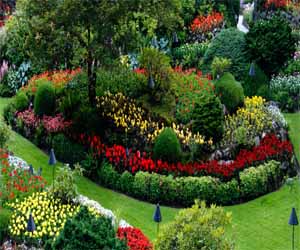
Choosing the right plants for your garden is a pivotal step in creating a beautiful and flourishing outdoor space. The process of plant selection is not just about aesthetics but also about understanding your garden's unique conditions and the needs of the plants you wish to grow. In this article, we will explore the art of plant selection and provide valuable insights for creating a garden that thrives.
Assess Your Garden Conditions: Before you begin selecting plants, it's essential to assess your garden's conditions. Consider factors like sunlight, soil type, moisture levels, and climate. Some plants thrive in full sun, while others prefer shade. Some can tolerate dry conditions, while others need consistently moist soil. Understanding your garden's unique environment is the first step in making informed plant selections.
Define Your Garden's Purpose: What do you want to achieve with your garden? Are you looking to create a lush, private retreat, or do you aim to grow a bountiful vegetable garden? The purpose of your garden will greatly influence your plant selection. For example, a meditation garden may focus on fragrant and low-maintenance plants, while a vegetable garden will prioritize edible crops.
Choose Plants That Thrive In Your Climate: Plants that are native or well-suited to your climate are more likely to thrive. Native plants are adapted to the local conditions and require less maintenance. They also support local wildlife and pollinators.
Consider Growth Patterns: When selecting plants, consider their growth habits. Some plants are compact and tidy, while others can be sprawling or invasive. Be mindful of how each plant will fit into your garden's design and its potential impact on nearby plants.
Balance Aesthetics: Think about the visual appeal of your garden. Balance is essential. Choose a variety of plants that offer different colors, textures, and heights. Create focal points and consider how the plants will look in different seasons, ensuring your garden remains visually appealing year-round.
Complement With Companion Plants: Some plants have natural affinities for others. Companion planting is a strategy where certain plants are grown together to enhance growth, deter pests, or improve flavor. For instance, planting basil with tomatoes can improve the flavor of both.
Be Mindful Of Maintenance: Consider your level of commitment to garden maintenance. Low-maintenance gardens may feature plants that require little attention, while high-maintenance gardens may include exotic or delicate species that need more care. Choose plants that align with your time and effort availability.
Don't Overcrowd: Resist the temptation to overpopulate your garden. Give your plants adequate space to grow and breathe. Overcrowding can lead to competition for resources, such as sunlight and nutrients, and result in less healthy plants.
Experiment And Learn: Gardening is an ongoing learning process. Be open to experimentation and don't be discouraged by occasional failures. Your garden will evolve over time, and you'll develop a deeper understanding of what works best for your space.
Consult Experts: If you're unsure about plant selection or have a specific vision for your garden, consider consulting with local gardening experts, nursery professionals, or horticulturists who can provide valuable guidance.
Plant selection is a creative and thoughtful process that can turn your garden into a thriving masterpiece. By considering your garden's conditions, purpose, and aesthetics, you can make informed choices that lead to a garden that not only looks beautiful but also thrives in its environment.
Maximizing Space And Minimizing Clutter
 3. Under-Bed Storage
3. Under-Bed Storage
Utilize the space beneath your bed for storage. Under-bed drawers or storage containers are an excellent way to store items like shoes, clothing, or seasonal bedding. This not only frees up closet space but also keeps your belongings easily accessible.
4. Kitchen Cabinet Organizers
Maximize kitchen storage with cabinet organizers. Pull-out shelves, drawer dividers, and pull-down racks can help you make the most of your kitchen cabinets, keeping your cookware, utensils, and pantry items neatly organized and accessible.
5. Wall-Mounted Shelves
Wall-mounted shelves are a versatile and stylish solution for adding storage space to your home. They can be used in various rooms to display decor, hold books, or store everyday items. By taking advantage of vertical space, you can free up floor space and reduce clutter.
6. Over-Door Storage
Over-door storage solutions are perfect for optimizing small spaces. Hanging racks, hooks, and pockets can be attached to doors to store shoes, accessories, cleaning supplies, or pantry items. These solutions maximize space while keeping items within easy reach.
7. Floating Furniture
Floating furniture, like wall-mounted vanities, desks, and entertainment centers, can make a room feel more spacious by creating the illusion of more floor space. These pieces not only look sleek but also offer storage underneath.
8. Clear Containers And Labels
Clear storage containers are essential for efficient organization. They allow you to see the contents without having to open each container. Use labels to further categorize and identify your belongings, making it easy to find what you need.

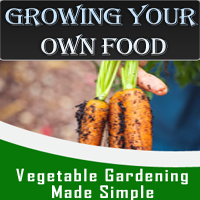
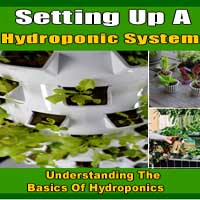

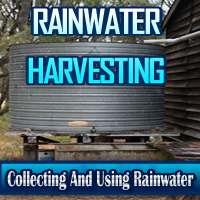

A Healthier, Safer, And Greener Way To Clean
 Health Hazards: Many conventional cleaning products release volatile organic compounds (VOCs) into the air, contributing to indoor air pollution. Prolonged exposure to VOCs can lead to respiratory issues, allergies, and skin irritations.
Health Hazards: Many conventional cleaning products release volatile organic compounds (VOCs) into the air, contributing to indoor air pollution. Prolonged exposure to VOCs can lead to respiratory issues, allergies, and skin irritations.
Environmental Impact: Harsh cleaning chemicals are not eco-friendly. When washed down drains, they can contaminate water systems and harm aquatic life. The production and disposal of these chemicals also contribute to pollution and waste.
Chemical Residue: Residues from chemical cleaners can linger on surfaces, posing long-term health risks, especially in homes with children or pets.
Benefits Of Chemical-Free Cleaning
Healthier Indoor Air: Chemical-free cleaning means cleaner indoor air quality, reducing the risk of respiratory problems and allergies for you and your family.
Reduced Health Risks: Non-toxic cleaning products reduce the risk of skin irritations and other health problems associated with chemical exposure.
Environmentally Responsible: Chemical-free cleaning is gentle on the environment. It doesn't contribute to water pollution, and it reduces the production and disposal of harmful chemicals.
Safer For Children And Pets: Chemical-free cleaning eliminates the risk of harmful chemical residues on surfaces, making your home safer for kids and pets.
Methods Of Chemical-Free Cleaning
Vinegar And Water: A mixture of white vinegar and water can be used to clean glass, countertops, and even sanitize surfaces.
Baking Soda: Baking soda is an excellent abrasive cleaner. It can be used to scrub surfaces, deodorize, and even extinguish small fires.
Nature's Blueprint For Healthy Gardens
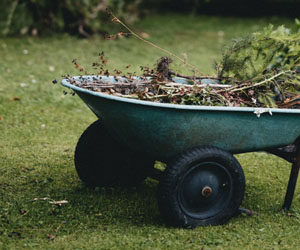 The Basics Of Crop Rotation
The Basics Of Crop Rotation
Crop rotation is a technique that involves growing different types of crops in a specific sequence over multiple growing seasons. The primary objective is to prevent the continuous cultivation of the same crop in the same area, as this can deplete the soil of specific nutrients and increase the likelihood of soil-borne diseases and pests.
Key Benefits Of Crop Rotation
Soil Health: Crop rotation helps to maintain soil fertility and structure by preventing the excessive depletion of specific nutrients. Different crops have different nutrient requirements, so alternating them allows the soil to recover and regenerate.
Pest And Disease Management: Crop rotation disrupts the life cycles of many pests and diseases. By moving crops to different areas each season, you can reduce the build-up of pathogens and pests that are specific to certain plants.
Improved Yields: Healthier soil and reduced pest and disease pressure typically result in higher crop yields. By practicing crop rotation, you can expect better harvests over time.
Weed Control: Some crops can help suppress the growth of specific weeds. By rotating crops strategically, you can naturally reduce weed infestations.
Reduced Soil Erosion: Rotated crops with varying root structures can help improve soil stability, reducing the risk of erosion, especially in sloped areas.
Crop Rotation Strategies
Crop rotation strategies can vary, but a typical system often involves dividing crops into different categories and rotating them following a predetermined sequence. Here's a simple three-category rotation plan:
Legumes: This category includes plants like peas and beans that fix nitrogen in the soil. They can be the first crop in the rotation to enrich the soil with this essential nutrient.
A Sustainable Solution For Water Scarcity
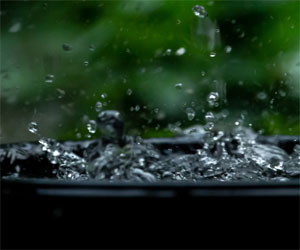 The Importance Of Rainwater Conservation
The Importance Of Rainwater Conservation
Water scarcity is a pressing global concern that affects millions of people, ecosystems, and industries. Many regions of the world are already experiencing the detrimental effects of water shortages, which can lead to droughts, crop failures, and even conflicts over dwindling water resources. Rainwater conservation addresses this issue by harnessing a natural resource that often goes underutilized.
The Collection Process
Rainwater conservation typically begins with the collection of rainwater from rooftops, pavements, or other surfaces. This water, known as runoff, is channeled through gutters and downspouts into storage tanks or cisterns. The collected rainwater can then be filtered and treated to make it suitable for various non-potable uses, such as watering gardens, flushing toilets, and washing vehicles. In some cases, rainwater can even be purified for drinking, further reducing the demand on municipal water supplies.
Environmental Benefits
One of the primary advantages of rainwater conservation is its positive impact on the environment. By capturing rainwater, we reduce the burden on natural water sources, such as rivers and lakes. This, in turn, helps protect aquatic ecosystems and maintains their biodiversity. Moreover, rainwater harvesting reduces soil erosion and minimizes the risk of flooding, as it diverts rainwater away from stormwater drainage systems.
Economic Benefits
Rainwater conservation also provides significant economic benefits. By using rainwater for non-potable purposes, homeowners and businesses can reduce their water bills, resulting in cost savings. In addition, governments and municipalities can save on infrastructure costs associated with water treatment and distribution.
The Future Of Modern Living
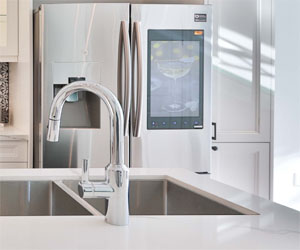 What Are Smart Appliances?
What Are Smart Appliances?
Smart appliances are traditional household devices, such as refrigerators, ovens, washing machines, and even coffee makers, that are equipped with advanced technology and connectivity features. These features allow them to be remotely controlled and monitored through a smartphone app or voice-activated virtual assistants. Smart appliances can perform a wide range of functions, from adjusting settings to sending notifications and alerts.
Convenience And Efficiency
One of the most significant advantages of smart appliances is the level of convenience they bring to everyday tasks. Imagine being able to preheat your oven on your way home, so dinner is ready as soon as you arrive. Smart appliances enable you to control and monitor their functions from virtually anywhere, giving you more control over your daily routines.
Energy Efficiency And Cost Savings
Smart appliances are designed to be energy-efficient. They often include features like energy-saving modes, remote scheduling, and real-time consumption tracking. For instance, smart thermostats can learn your heating and cooling preferences and create optimized schedules, which not only improve comfort but also save on energy costs. Smart appliances not only benefit your wallet but also contribute to environmental sustainability.
Integration With Smart Homes
Smart appliances are designed to be compatible with other smart home devices and systems. They can seamlessly integrate with centralized home automation hubs, allowing you to control multiple devices from a single app or voice-activated virtual assistant. This interconnected ecosystem enhances the overall smart home experience.
Voice Control
Many smart appliances can be controlled via voice commands through virtual assistants like Amazon's Alexa, Google Assistant, or Apple's Siri.
Building A Sustainable Future
 The core principle of eco-friendly homes is to minimize the negative impact on the environment while maximizing the use of renewable and sustainable resources. Here are some key elements of eco-friendly homes:
The core principle of eco-friendly homes is to minimize the negative impact on the environment while maximizing the use of renewable and sustainable resources. Here are some key elements of eco-friendly homes:
Energy Efficiency: Eco-friendly homes are designed to be highly energy-efficient. They often feature better insulation, energy-efficient windows and doors, and advanced heating and cooling systems. These features reduce energy consumption and lower utility bills.
Renewable Energy: Many eco-friendly homes incorporate renewable energy sources such as solar panels and wind turbines. These technologies harness clean, sustainable energy from the sun and wind, reducing dependence on fossil fuels.
Water Conservation: Sustainable homes often feature water-saving appliances and fixtures. Rainwater harvesting and greywater recycling systems are also utilized to reduce water consumption, which is especially important in regions facing water scarcity.
Use Of Sustainable Materials: The construction of eco-friendly homes emphasizes the use of sustainable and recyclable building materials. This includes materials like bamboo, reclaimed wood, recycled glass, and low-VOC (volatile organic compound) paints to improve indoor air quality.